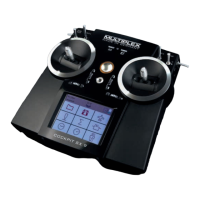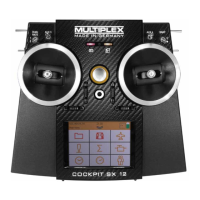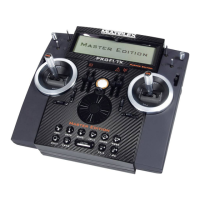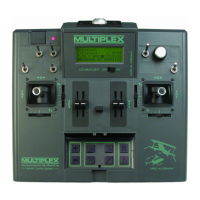MULTIPLEX
7.11 Trims
The transmitter features digital trims for the three con-
trol surface functions. The trims are used to fine-tune
the centre position of the servos. When you adjust the
trims, you will hear a beep for every increment. For
clarity you will hear different double-beeps at the cen-
tre position and both end-points. No trim is provided
for the throttle function, as modern speed controllers
for electric power systems adjust themselves auto-
matically to the throttle stick’s travel. The trim setting
is stored permanently for each model.
7.12 Dual-Rate
In the case of model aircraft it can be useful to reduce
the control surface travels when the sticks are at full
deflection, e.g. when the model is flying at high speed.
At other times - such as when flying aerobatics - full
control surface travels are required. The Dual Rate
function provides a means of switching between full
and reduced control surface travels in flight (the throt-
tle function is not affected by the Dual Rate setting).
Press the stick which is assigned to the elevator func-
tion to switch Dual Rate on or off; elevator aileron and
rudder are affected simultaneously.
An audible signal con-
firms the current status:
a brief beep indicates
reduced servo travel, a
long beep indicates
normal servo travel. The
setting is stored perma-
nently and separately for each model.
7.13 Fail-Safe
The receiver features a Fail-Safe function. If inter-
ference occurs, preventing the receiver picking up a
valid M-LINK signal, the servos move to the pre-
viously programmed positions. In the case of a model
aeroplane this usually means centred control sur-
faces, with the motor
switched off. This signifi-
cantly enhances safety
when flying a model.
Move the transmitter con-
trols to the point where the
servos take up the desired
fail-safe positions. When you are satisfied, press the
SET button on the receiver: This action permanently
stores the Fail-Safe positions in the receiver. However
you can overwrite the settings at any time by setting
new positions and pressing the button again.
7.14 Auxiliary (AUX) channel
The SMART SX features one switched channel (=
servo channel 6). This option can be used when an
M-LINK receiver with six or more channels is used.
The trim lever adjacent to the throttle stick controls the
switched function.
This function can be used to switch working systems on
and off, such as a model’s lighting system, retrac-table
undercarriage, etc.
7.15 Range checking
Before launching a model you should always check the
range of the radio control system. Regular range checks
are very important - even when using a 2.4 GHz system - to
ensure that the RC system continues to work properly, and
to allow you to detect problems in good time.
To carry out a range check, switch the transmitter on, then
immediately press the multi-function button for a period of
two seconds, i.e. until the
Status LED glows constantly.
The transmitter now emits an
audible warning signal every
ten seconds to alert you to
the fact that it is in range-
check mode, and is only
transmitting at low power.
In this state the model control system must continue to
work up to a range of about fifty metres. If, and only if, this
is the case, the system will operate at full range - beyond
the limits of vision - when the transmitter is in normal oper-
ating mode. Switch the transmitter off to disable range
check mode; when you switch on again, the system will be
ready for normal use.
7.16 Model memory (ID)
The set is supplied complete
with a compact 2.4 GHz M-LINK
receiver with the UNI connector
system, whose small case and
in-line servo sockets make it
ideal for use in relatively small
models. However, the outstand-
Control for
channel 6,
Mode 1 and 3
Control for
channel 6,
Mode 2 and 4
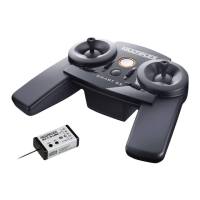
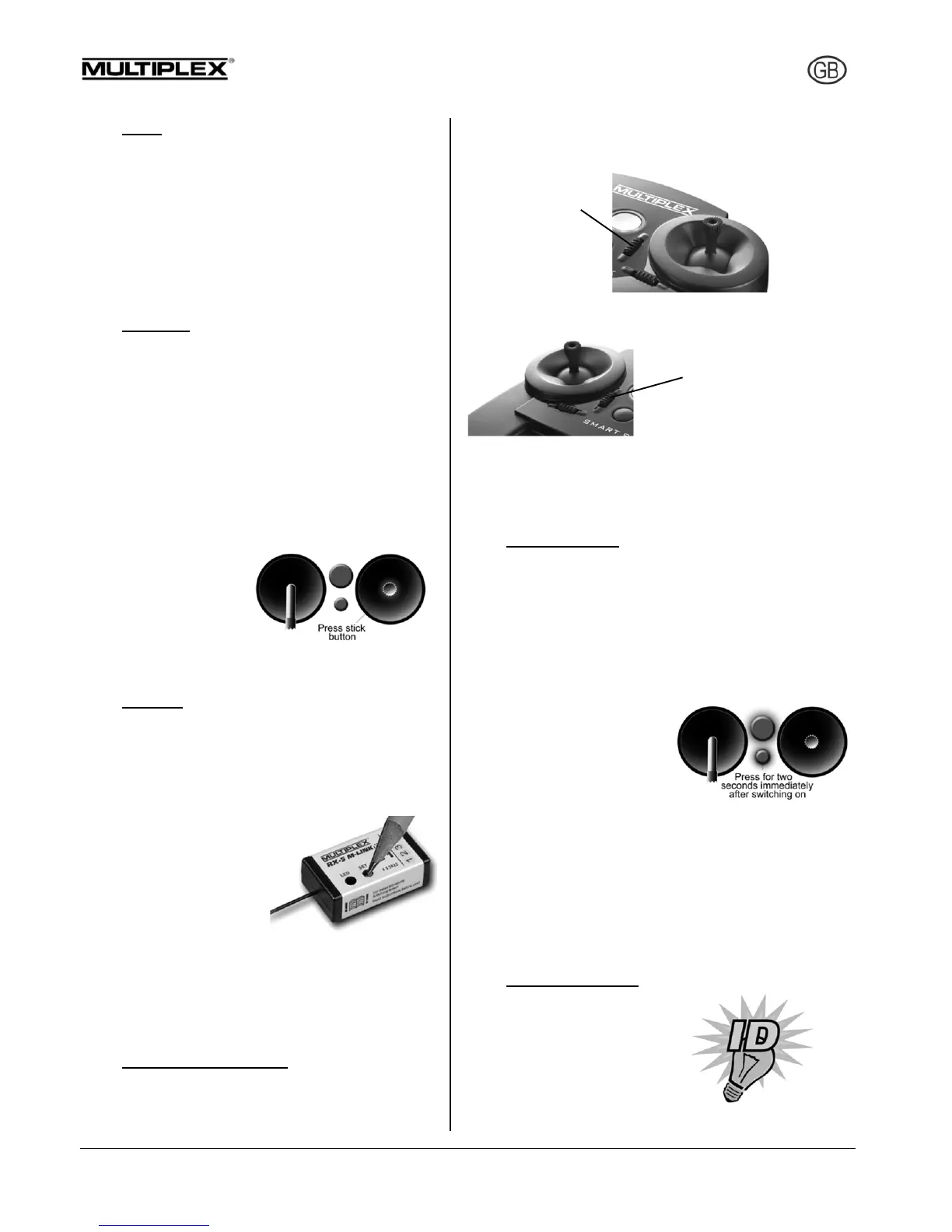